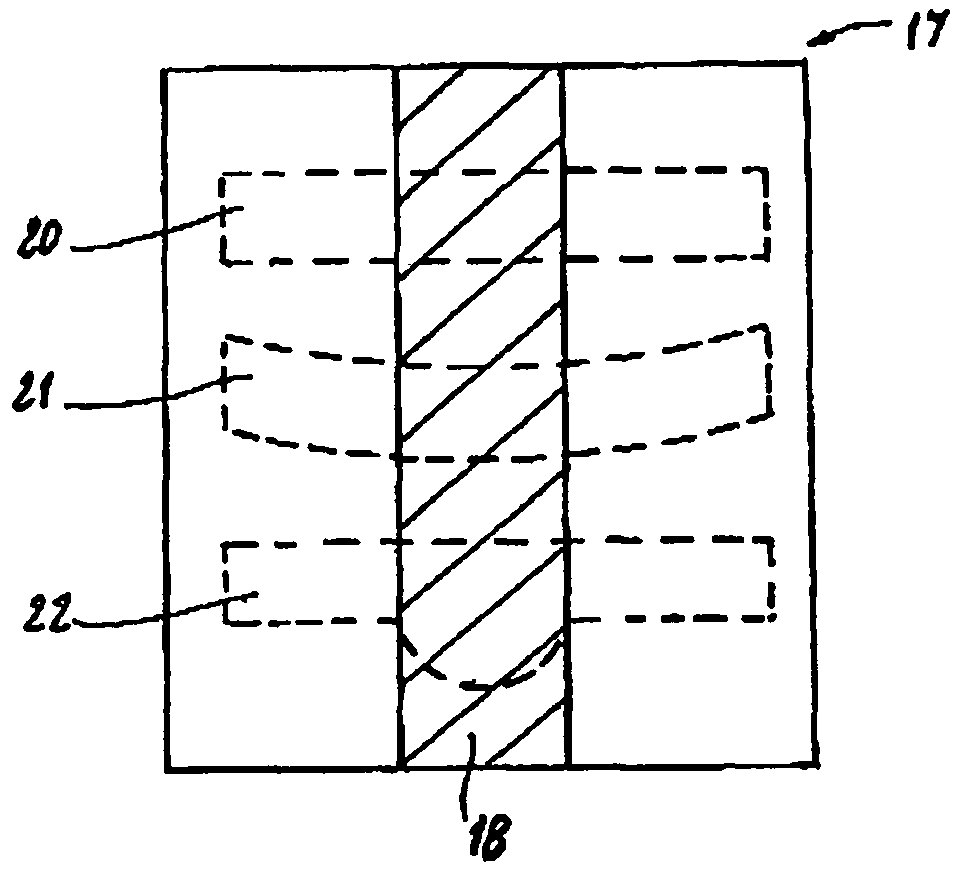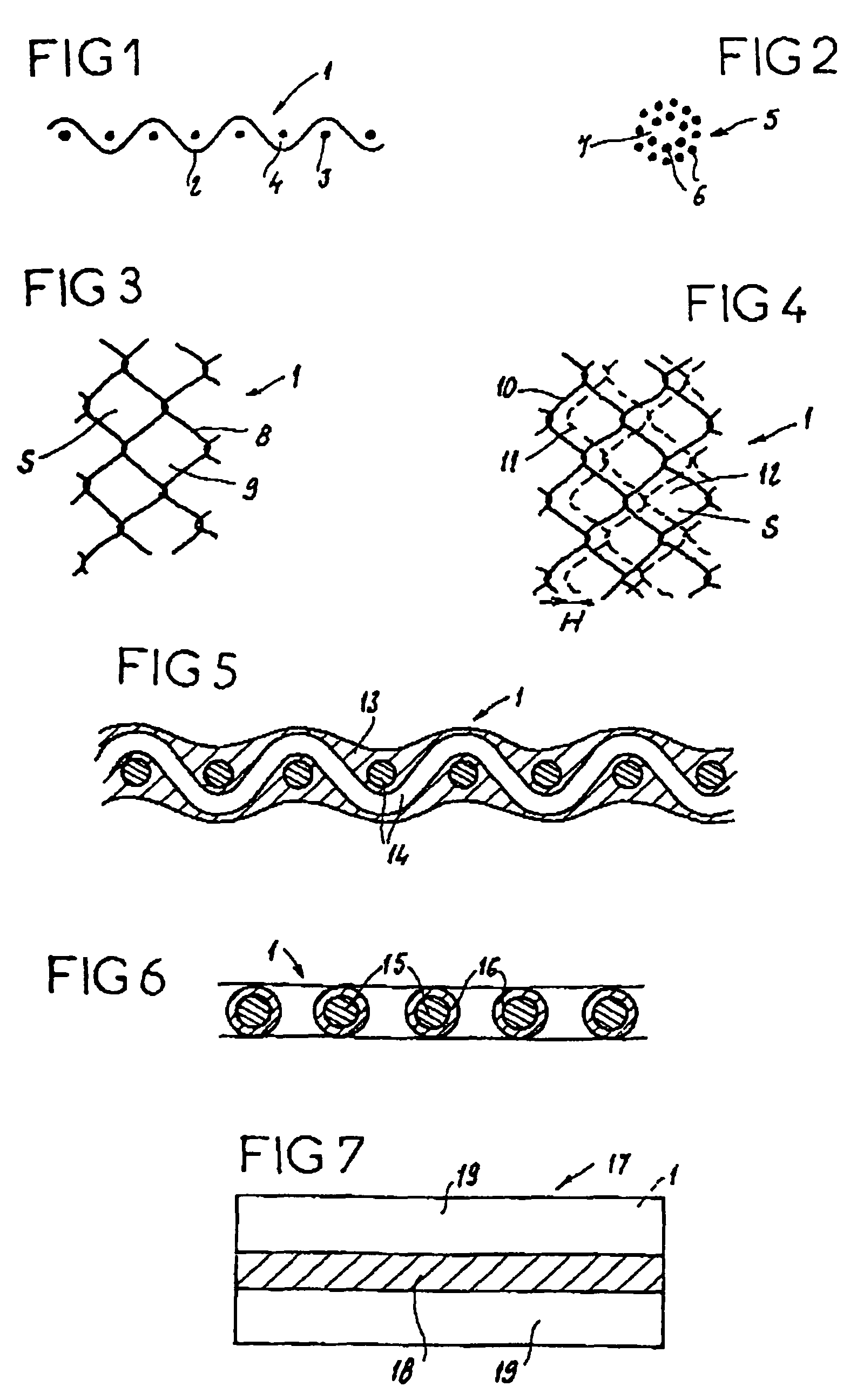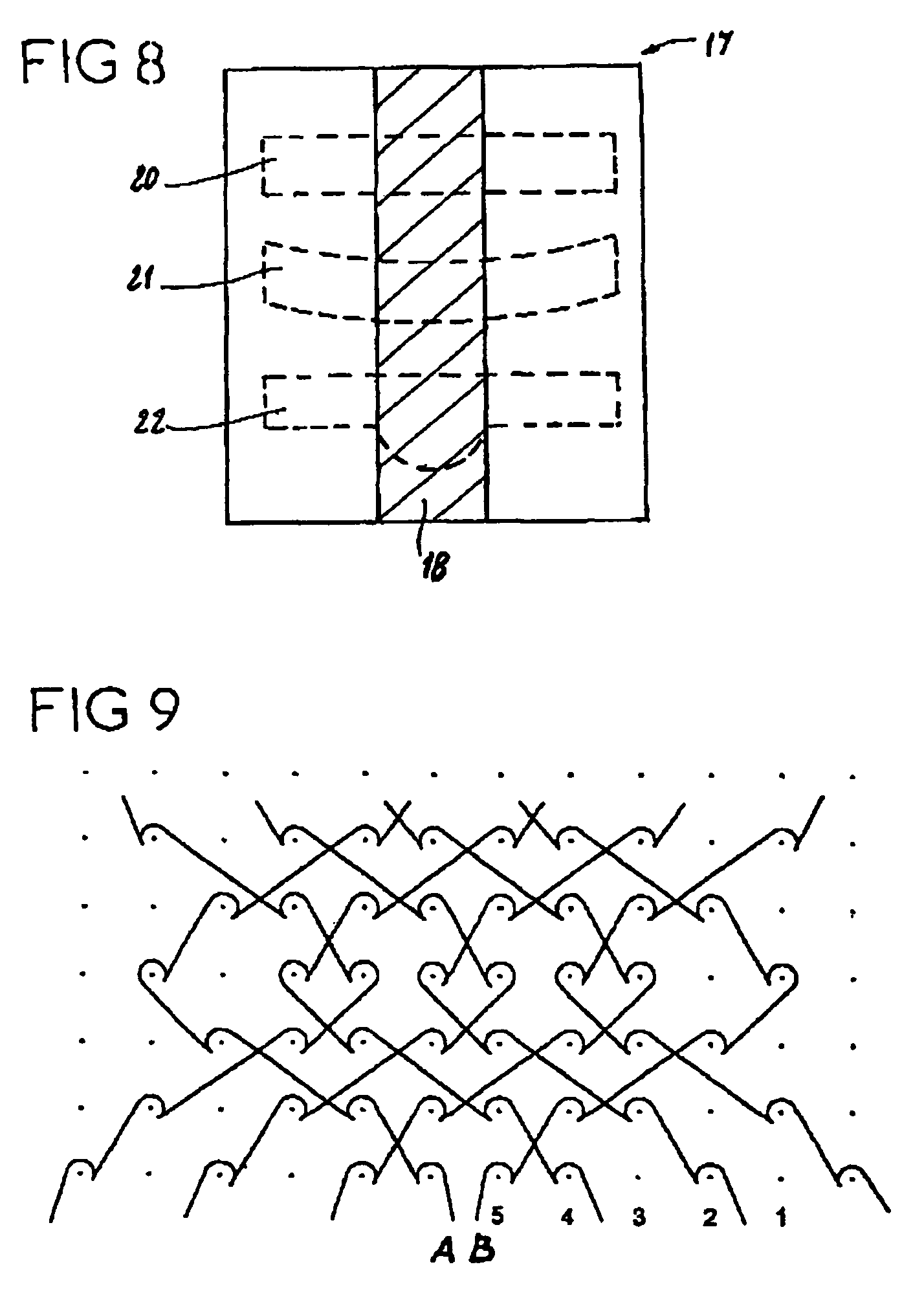Prosthesis for reinforcement of tissue structures
a tissue structure and tissue technology, applied in the field of tissue structure reinforcement prosthesis, can solve the problems of increased risk, increased risk, and inability to absorb material into the human body, and achieve the effect of facilitating subsequent restoration and rapid development of weakly inflammatory cellular covering
- Summary
- Abstract
- Description
- Claims
- Application Information
AI Technical Summary
Benefits of technology
Problems solved by technology
Method used
Image
Examples
example 1
[0073]A textile support is produced in which the arrangement of threads constitutes a knit formed by warp knitting of two plies of threads, according to the diagram in FIG. 9. In this figure, each ply of threads is identified by a letter, A or B, the diagram itself using a system of description of the knit which is entirely familiar and intelligible to the person skilled in the art, and which will not be described in detail here. The textile support is knitted on a warp-knitting machine with two guide bars.
[0074]The two bars corresponding to the threads A and B are threaded—one bar full, one bar empty—and move symmetrically so as to obtain staggered apertures. The final textile support can then be stabilized simply by passing it through an oven at a temperature of between about 110° C. and about 150° C.
[0075]The threads are polypropylene monofilaments whose diameter can vary from 0.08 to 0.18 mm.
[0076]The textile support thus prepared using a thread of 0.10 mm in diameter has the fo...
example 2
[0082]Starting from the same textile support and the same solution as were described in Example 1, the solution is sprayed onto the central band of the textile support which is to be protected. The spraying is carried out on one face of the textile. After 30 minutes of maturation of the gel formed on the surface of the textile, the solution is sprayed onto the other face. After the second spraying operation, the whole arrangement is left to dry under a flow of sterile air. The quantity of solution necessary to obtain a film with a final density of 0.133 g / cm2 is sprayed on. After maturation, the whole arrangement is sterilized with ethylene oxide.
[0083]An intermediate composite part is obtained whose central band is an occluded zone according to the invention and whose lateral parts are devoid of absorbable material.
PUM
 Login to View More
Login to View More Abstract
Description
Claims
Application Information
 Login to View More
Login to View More - R&D
- Intellectual Property
- Life Sciences
- Materials
- Tech Scout
- Unparalleled Data Quality
- Higher Quality Content
- 60% Fewer Hallucinations
Browse by: Latest US Patents, China's latest patents, Technical Efficacy Thesaurus, Application Domain, Technology Topic, Popular Technical Reports.
© 2025 PatSnap. All rights reserved.Legal|Privacy policy|Modern Slavery Act Transparency Statement|Sitemap|About US| Contact US: help@patsnap.com



